By Benjamin Radford April 11, 2014
#FORTEAN PHENOMENA #ANOMALOUS PHENOMENA
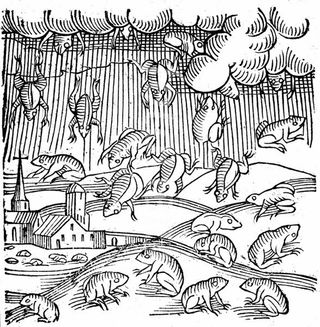
A woodcut showing a rain of frogs in Scandanavia, from 'Prodigiorum ac Ostentorum Chronicon,' one of the first modern books about strange phenomenon, was published in 1557. (Image: © Public domain.)
For millennia, people have reported a rare and strange phenomenon: a sudden rain of frogs — or fish or worms — from the sky. You may be minding your own business walking in a park on a blustery day when a small frog hits you on the top of the head. As you peer down at the stunned animal, another one comes down, and another and another all around you, in a surreal rain of frogs in various states of trauma.
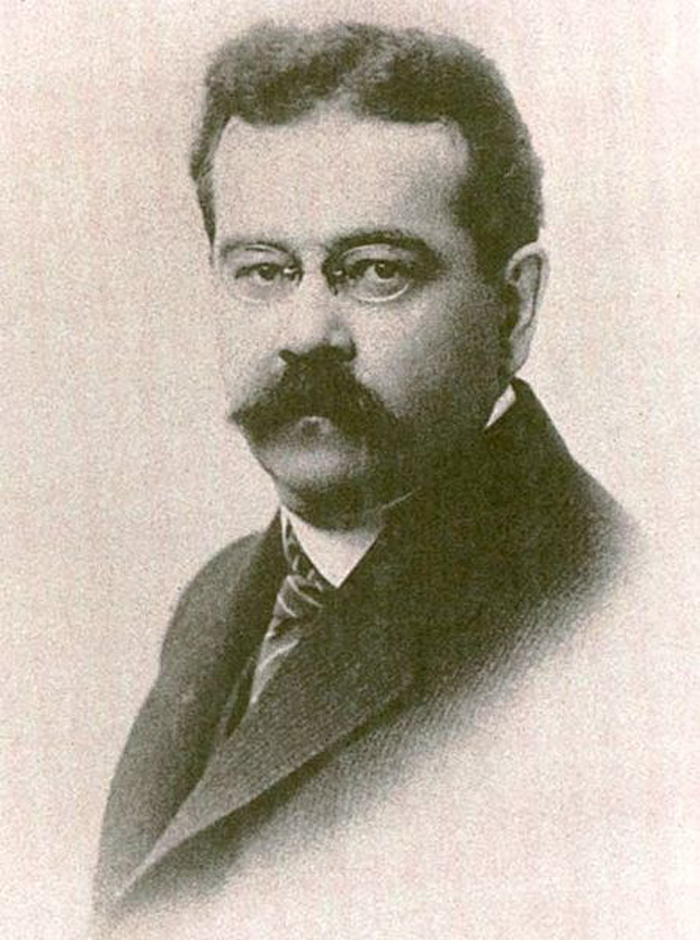
Charles Fort was an early collector of reports about strange phenomena. (Image credit: Public domain.)
Charles Fort, an early collector of reports about strange phenomena, noted the following in his 1919 tome, "The Book of the Damned": "A shower of frogs which darkened the air and covered the ground for a long distance is the reported result of a recent rainstorm at Kansas City, Mo." This report first appeared in the July 12, 1873, issue of Scientific American. Fort noted dozens of similar reports from around the world and wrote that as "for accounts of small frogs, or toads, said to have been seen to fall from the sky, [a skeptical] writer says that all observers were mistaken: that the frogs or toads must have fallen from trees or other places overhead."
Any number of small animals have been reported falling from the sky, including ants, small fish and worms. Modern examples tend to be rare, but reports do surface occasionally in magazines devoted to strange phenomenon such as Fortean Times (named after Fort). Frog rains were mentioned in an episode of "The X-Files" titled "Die Hand Die Verletzt" ("The Hand That Wounds"), in which Agent Scully exclaims, "Mulder... toads just fell from the sky," to which the unflappable Agent Mulder replies, "I guess their parachutes didn't open."
Bob Rickard and John Michell, in their book, "The Rough Guide to the Unexplained," note that "The quality of the evidence for rains of fishes and frogs is good, with a canon of well-observed cases going back to antiquity." According to Jane Goldman's "The Book of The X-Files," "Falls of animals were first recorded in A.D. 77, in Pliny's 'Natural History' which scoffed at the idea that they could rain from the skies, suggesting instead that they grew from the ground after heavy rains.
This explanation likely seemed reasonable 2,000 years ago — after all, some animals such as worms and insects do seem to suddenly "appear" on the grounds during and following heavy rains, driven to the surface because they cannot breathe in the soaked soil. So if the frogs don't originally come from the skies, and they don't "grow" out of the ground after being watered, where do they come from? [Pictures: Cute and Colorful Frogs]
Explanations?
The most likely explanation for how small frogs get up into the sky in the first place is meteorological: a whirlwind, tornado or other natural phenomenon. Fort admitted that this is a possibility, but offered several reasons why he doubted that's the true or complete explanation: "It is so easy to say that small frogs that have fallen from the sky had been scooped up by a whirlwind ... but [this explanation offers] no regard for mud, debris from the bottom of a pond, floating vegetation, loose things from the shores — but a precise picking out of the frogs only. ... Also, a pond going up would be quite as interesting as frogs coming down. Whirlwinds we read of over and over — but where and what whirlwind? It seems to me that anybody who had lost a pond would be heard from." For example, Fort argued, one published report of "a fall of small frogs near Birmingham, England, June 30, 1892, is attributed to a specific whirlwind — but not a word as to any special pond that had contributed."
What about the reasons that Fort and others cite for why a whirlwind is not a good explanation? Frogs and fish do not of course live in the sky, nor do they suddenly and mysteriously appear there; in fact they share a common habitat: ponds and streams. It's certain that they gained altitude in a natural, not supernatural, way. [Countdown: Fishy Rain to Fire Whirlwinds: The World's Weirdest Weather]
That there are very few eyewitness accounts of frogs and fish being sucked up into the sky during a tornado, whirlwind or storm is hardly mysterious or unexplainable. Anytime winds are powerful enough to suck up fish, frogs, leaves, dirt and detritus, they are powerful enough to be of concern to potential eyewitnesses. In other words, people who would be close enough to a whirlwind or tornado to see the flying amphibians would be more concerned for their own safety (and that of others) to pay much attention to whether or not some frogs are among the stuff being picked up and flown around at high speeds. These storms are loud, windy, chaotic, and hardly ideal for accurate eyewitness reporting.
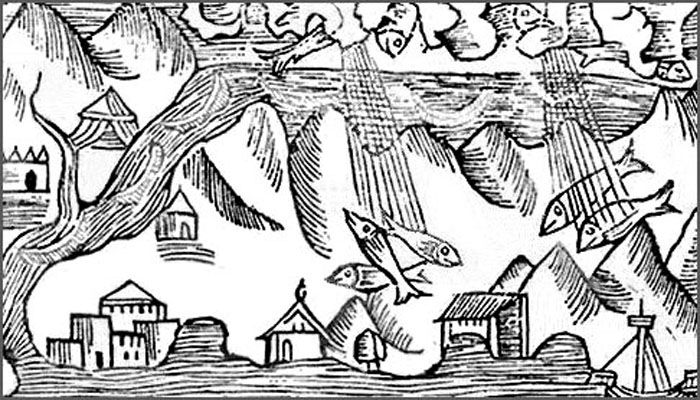
A 1555 engraving of a rain of fish. (Image credit: Public domain.)
The same applies to Fort's apparent surprise that, following frog falls, farmers or others don't come forward to identify which specific pond the frogs came from. How would anyone know? Whirlwinds and tornadoes may move quickly and over many miles, destroying and lifting myriad debris in its wake. Unless a farmer took an inventory of all the little frogs in a pond both before and after a storm, there's no way anyone would know exactly where they came from, nor would it be noteworthy.
Of course, a wind disturbance need not be a full-fledged tornado to be strong enough to pick up small frogs and fish; smaller, localized versions such as waterspouts and dust devils — which may not be big enough, potentially damaging enough, or near enough to populated areas to be reported in the local news — may do the trick.
High winds, whirlwinds and tornadoes are strong enough to overturn cars and rip the roofs off of buildings. In 2012, a 2-year-old Indiana girl was lifted into the air during a storm, and, incredibly, carried into the sky and found alive 10 miles away. Strong winds are certainly powerful enough to lift up and carry frogs into the air. It is, of course, possible that there is some unknown, small-frog-levitating force at work in nature, but until and unless that is verified, it seems likely that this mystery is solved after all.
Benjamin Radford, M.Ed, is a member of the American Folklore Society and author of seven books including Scientific Paranormal Investigation: How to Solve Unexplained Mysteries. His Web site is www.BenjaminRadford.com.
Charles Fort: Pioneer in the Search for Scientific Anomalies or Anti-dogmatist who Collected Bizarre Stories?
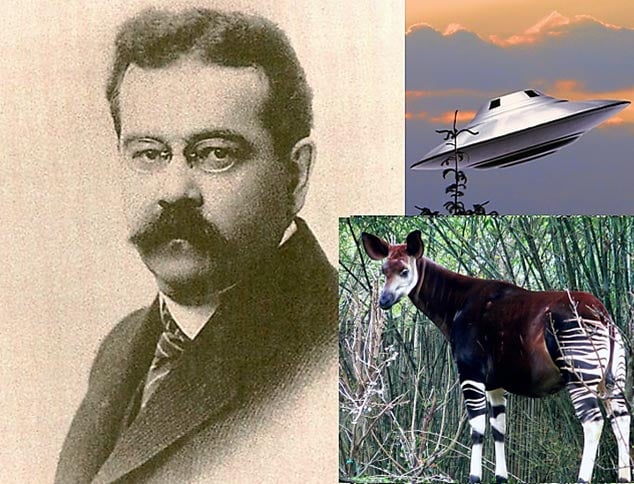
25 MARCH, 2016 - 13:50 DHWTY
Charles Hoy Fort was an American “self-educated newspaperman, modestly-successful short story writer, unsuccessful novelist and inventor, and eccentric natural philosopher,” regarded by some, especially his devotees, who call themselves ‘Forteans’, as a pioneer of anomalistic.
This is a term coined in 1973 by an anthropologist by the name of Roger W. Wescott, and has been used to describe the “interdisciplinary study of scientific anomalies (alleged extraordinary events unexplained by currently accepted scientific theory)”. Fort was fascinated by such anomalies, and spent much of his adult life collecting accounts of such events.
Charles’ Troubled Early Life
Charles Fort was born on August 6, 1874 in Albany, New York. Fort’s parents were Dutch immigrants who became fairly prosperous in the United States. Fort’s family owned a wholesale grocery business in Albany. Fort had a painful childhood, as it has been said that his father was abusive and often beat him. Some believe that as a result of these experiences, Fort became skeptical and distrustful of authority and dogma.
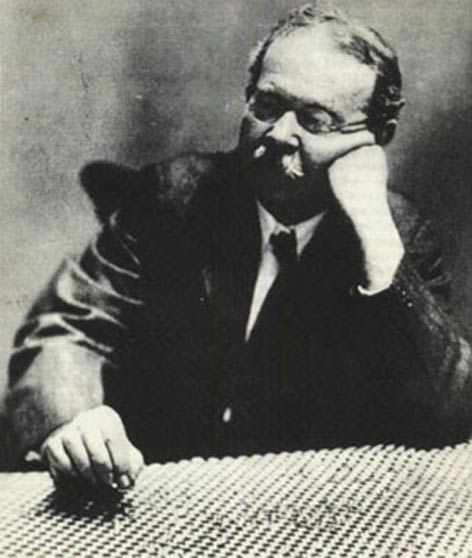
Charles Fort. ( Daniel Moler )
In 1892, at the age of 18, Fort escaped his father’s authoritarian ways by leaving home. He began working as a journalist for a New York newspaper and eventually became an editor of a Long Island paper. He quit his job, however, in 1893, and hitchhiked around the world.
His travels were cut short in 1896 when he contracted malaria in South Africa. After that, Fort returned to New York, and married Anna Filing. One source claims that Anna was “an Irish immigrant whom he had known in Albany”, whilst another says she was “an English servant girl in his father's house”.
Unidentified Flying Objects – the reality, the cover-up and the truth
The ancient history of UFOs and the unclassified document of Oppenheim and Einstein
Fort’s Writings
For the next couple of years, Fort lived in the Bronx with his wife. During this time, the couple lived in poverty, and Fort tried to make ends meet by writing stories for newspapers and magazines. Fort eventually gave up on writing fiction. In 1906, he began to collect accounts of anomalies. However, this was not his initial aim. Instead, whilst doing his research in the New York Public Library, he read about a whole range of subjects, including science, art, philosophy, and economics. It was here that he found reports of odd things, and started to collect them by scribbling them on small sheets of paper.
In 1915, Fort had finished writing two books, X and Y. Unfortunately, publishers during that time were not interested in them, and hence they were considered failures. These books were later lost, as Fort destroyed both manuscripts later in his career.
In the same year, Fort was encouraged by Theodore Dreisner (a magazine editor whom Fort met in 1905 and befriended) to compile his reports of anomalies into a book. In the following year, Fort received a modest inheritance from an uncle which allowed him to concentrate on his writing. Thus, in 1919, the Book of the Damned was published.
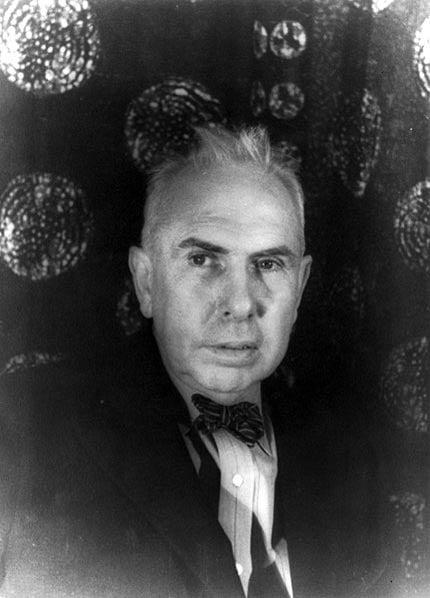
Theodore Dreiser, photographed by Carl Van Vechten. ( Public Domain )
The Emergence of the Fortean Society
Whilst Forteans regard Charles Fort as a pioneer in the study of anomalies, others are less certain about it. For example, one source describes Fort as an “anti-dogmatist who collected weird and bizarre stories.”
The Establishment Has Already Acknowledged A Lost Race of Giants - Part 1
DNA Evidence Suggests Captured Russian Ape Woman Might Have been Subspecies of Modern Human
Apart from collecting bizarre reports, it has been claimed that Fort did not actually do much else. For example, it has been pointed out that Fort did not question the veracity of the accounts he collected. Additionally, Fort was not really interested in making any sense out of the accounts he collected either. It has also been argued that Fort’s primary goal of collecting these accounts of anomalies was to embarrass and ridicule scientists with stories that could not be explained or answered by science. For Fort, scientists were on his list of authoritative figures he distrusted.
Charles Fort died at the age of 57 on May 3, 1932 in the Bronx, New York. A year before his death, the Fortean Society was established by one of Fort’s friends, Tiffany Thayer. Fort, who was a skeptic even of his own authority, refused to join this society. Whilst some emphasize his hostility towards science, other regard him as a hero and an inspirational figure whose writings on anomalies has profoundly impacted the way we view and approach this subject.
Fortean Societies can be found in different parts of the world, but Charles Fort also inspired magazines, such as the Fortean Times, and a short-run TV program called Fortean TV . Both the magazine and the show have a focus on anomalous phenomena that probably would have interested Fort.

Steve Moore - obituary
Steve Moore was the co-founder of The Fortean Times who detailed the strange and supernatural
Steve Moore DIED 13 Apr 2014
Steve Moore, who has died aged 64, had a prolific career at the margins of literature. His output included scripts for comic strips, novelisations of films and supernatural fiction. He also edited several collections of pieces sent in by readers of The Fortean Times — a magazine devoted to strange phenomena — of which Moore was a founder and mainstay.
He compiled The Fortean Times Book of Strange Deaths (1999), in which one entry ran: “In Japan in 1981, Kenji Urada was killed when a robot at the Kawasaki factory where he worked mistook his head for a component that needed tightening up.” For their Book of Close Shaves And Amazing Luck, he observed that “you may be lucky to be alive if you’ve just had a six-foot steel crowbar driven through one side of your skull and out the other, but most of us would rather we didn’t actually need that sort of luck in the first place”.
Long fascinated by the I Ching and a Fellow of the Royal Asiatic Society, his Fortean contributions also included book reviews and articles on Oriental curiosities. His involvement had begun in 1973 when he contributed stories to what was then known as The News; he had known its publisher, Bob Rickard, since 1969, when both worked on a fanzine, Orpheus (where Moore once penned an editorial on “the psychological benevolence and universal importance of the suet pudding”).
Moore favoured goatee beards, wore black satin jackets and practised magic. He believed that as he had been born “at the full moon atop a crescent-shaped hill” and bore a “crescent birthmark on my left forearm … I was obviously destined to be either a werewolf or a lunatic. Fortunately there’s been no sign of fur or ripping out people’s throats so far.”
The hill in question was Shooters Hill in south London, where he was born on June 11 1949 and where he lived for nearly all his life in the same book-filled house. It was where he published fanzines during the late Sixties, where he worked on nearly all his subsequent writings, and where he died.
Leaving school aged 16, Moore was a flour grader at the Rank Hovis McDougall laboratory in Deptford, then an office boy at Odhams Press, a subsidiary of the publishers IPC. Within three months he became a junior sub-editor on Pow! and Fantastic comics, both of which featured imported strips from Marvel Comics (by the late Seventies, Moore would be working for the British arm of that imprint). He became a freelance writer in 1972.
He produced film and TV tie-in Christmas annuals for Supergran, Dick Turpin and a Polish-produced series, Sherlock Holmes and Dr Watson (1979) — which was never shown in Britain. Moore also wrote for IPC’s girls’ comic Mirabelle, but was too embarrassed to buy any of its copies; embarrassment continued when, having been assured a Titbits feature on sexual exploits in Bangkok would be credited to his pseudonym Pedro Henry, it went to press under his real name.
Returning to IPC in 1977, he wrote for 2000AD from its 12th issue onwards. His strips for Marvel’s Doctor Who Weekly (later Doctor Who Magazine) were also clearly in 2000AD’s style. Moore’s creation of muscular, weapon-wielding “Abslom Daak – Dalek Killer” had more in common with the character Snake Plissken from Escape From New York than any jelly baby-proffering timelord.
A fellow Doctor Who contributor was the unrelated Alan Moore, who described Steve as his “oldest and dearest friend”, who had taught him the mechanics of comic strips. Alan made his namesake the subject of the essay Unearthing (2006); meanwhile, Steve wrote the novelisation of the film V For Vendetta (published 2006), adapted from his friend’s graphic novel.
He published a Gothic fantasy novel, Somnium, in 2011.
Steve Moore never married. For many years he cared for his brother Chris, who suffered from motor neurone disease and died in 2009.
Steve Moore, born June 11 1949, died March 16 2014
No comments:
Post a Comment